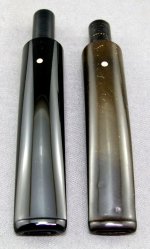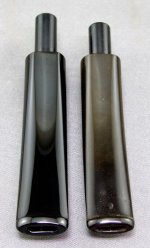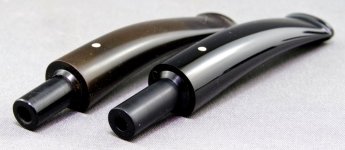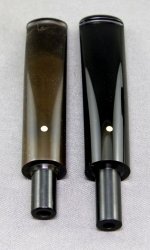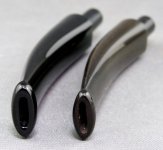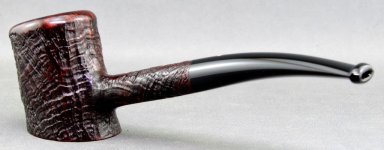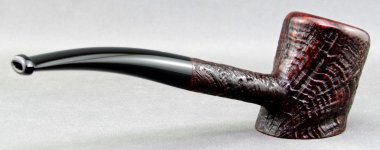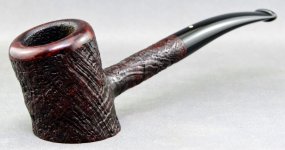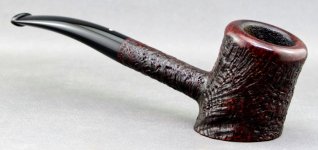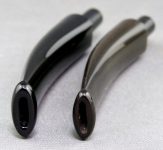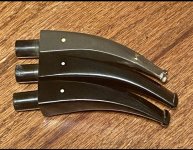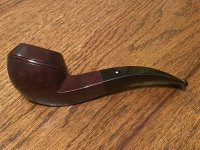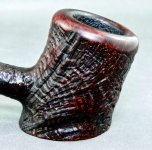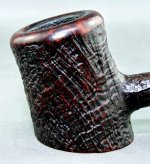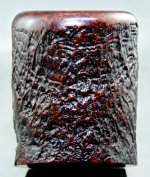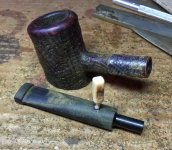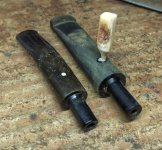All factory made pipes are produced "on the clock", assembly line style. A worker has only X minutes to complete his task before the whistle blows (so to speak), and the pipe (or batch of pipes) moves on.
Anyone who couldn't keep up didn't stick around long.
The top name artisan carvers, though, like Lars Ivarsson, Tokutomi, and etc. can take as long as they want. Often, those guys finish a step and shelve the pipe for a while so they can come back to it with fresh eyes. Their workday is doing an hour here and an hour there on a variety of pieces that might have been in their shop for months. Only when the maker looks at it for the second or third time and can find no errors or imperfections does it get shipped.
So. I've always wondered what a Dunhill (or equivalent quality English brand) pipe would be like if the factory workers had been given a "free time" week to make a few of their favorite shapes back in their company's classic era, AND the Scandinavian Standard (for lack of a better term) regarding what was technically possible had been known to them.
That motivation is what powered this project.
The pipe is an exceepingly rare 1943 shape 475 Shell whose stem was just OK. It had ZERO flare, when a tiny amount always looks better (it's like the forward bowl cant on a billiard looking better than dead vertical), the bend had a bit of kink in it, the topline of the stem had been cut straight before bending which bloinked the arc a smidge, and the tenon was a bit too short for a thin-shanked pipe (meaning if dropped would be more likely to crack or shatter the shank than snap the tenon off cleanly).
There was also significant-but-not-horrible overall oxidation, button wear, and "buffer shrinkage" from decades of topping up the shine. (None of which was Dunhill's doing, of course)
So, all those things were addressed in a single go, and here is the result:
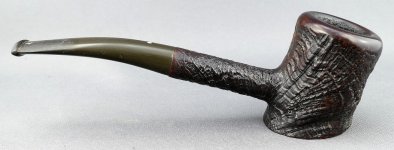
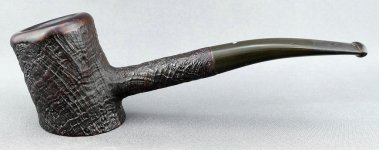
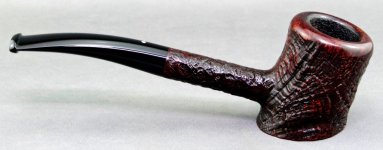
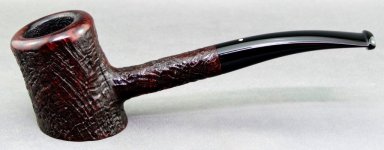
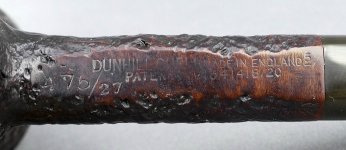
Anyone who couldn't keep up didn't stick around long.
The top name artisan carvers, though, like Lars Ivarsson, Tokutomi, and etc. can take as long as they want. Often, those guys finish a step and shelve the pipe for a while so they can come back to it with fresh eyes. Their workday is doing an hour here and an hour there on a variety of pieces that might have been in their shop for months. Only when the maker looks at it for the second or third time and can find no errors or imperfections does it get shipped.
So. I've always wondered what a Dunhill (or equivalent quality English brand) pipe would be like if the factory workers had been given a "free time" week to make a few of their favorite shapes back in their company's classic era, AND the Scandinavian Standard (for lack of a better term) regarding what was technically possible had been known to them.
That motivation is what powered this project.
The pipe is an exceepingly rare 1943 shape 475 Shell whose stem was just OK. It had ZERO flare, when a tiny amount always looks better (it's like the forward bowl cant on a billiard looking better than dead vertical), the bend had a bit of kink in it, the topline of the stem had been cut straight before bending which bloinked the arc a smidge, and the tenon was a bit too short for a thin-shanked pipe (meaning if dropped would be more likely to crack or shatter the shank than snap the tenon off cleanly).
There was also significant-but-not-horrible overall oxidation, button wear, and "buffer shrinkage" from decades of topping up the shine. (None of which was Dunhill's doing, of course)
So, all those things were addressed in a single go, and here is the result:













